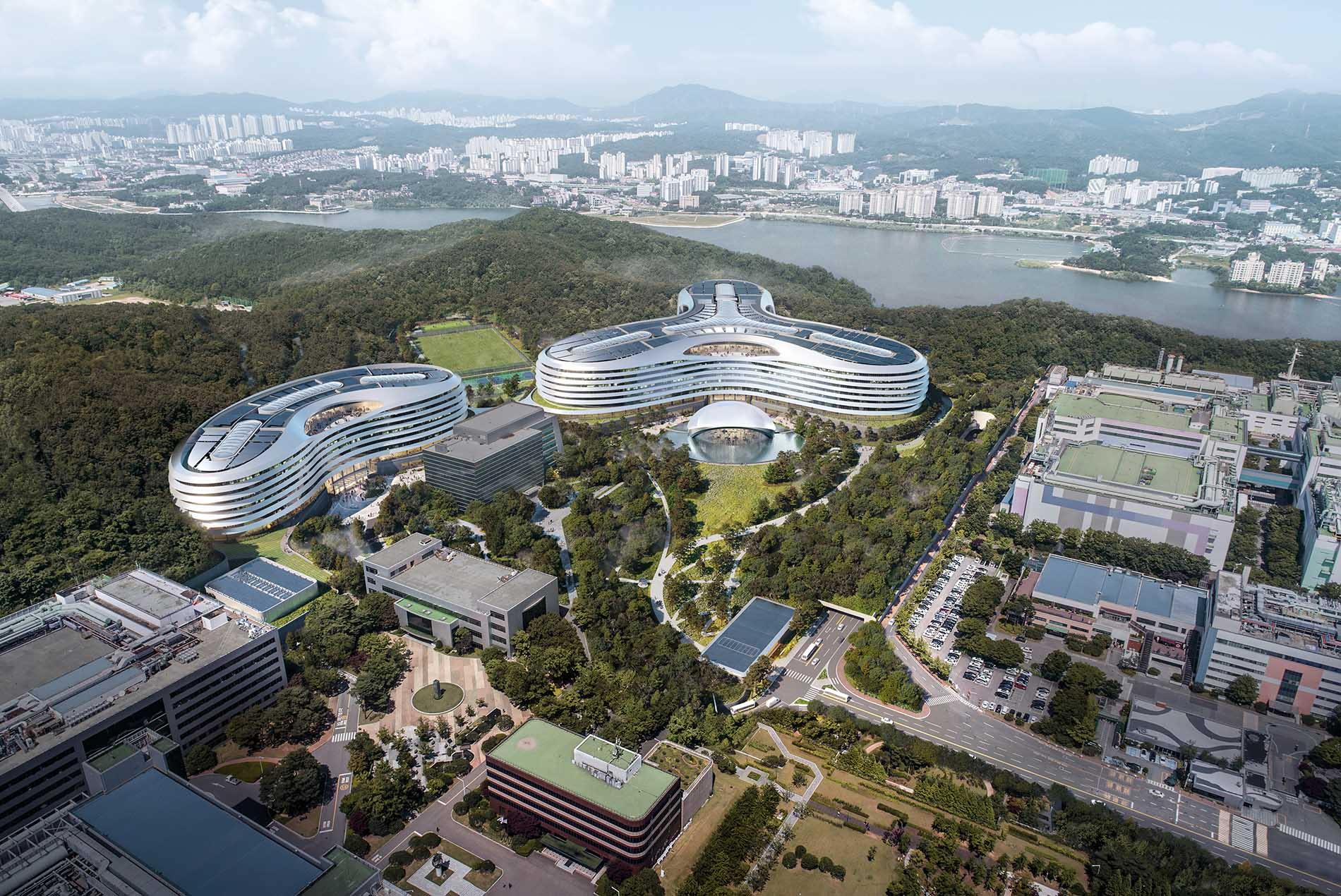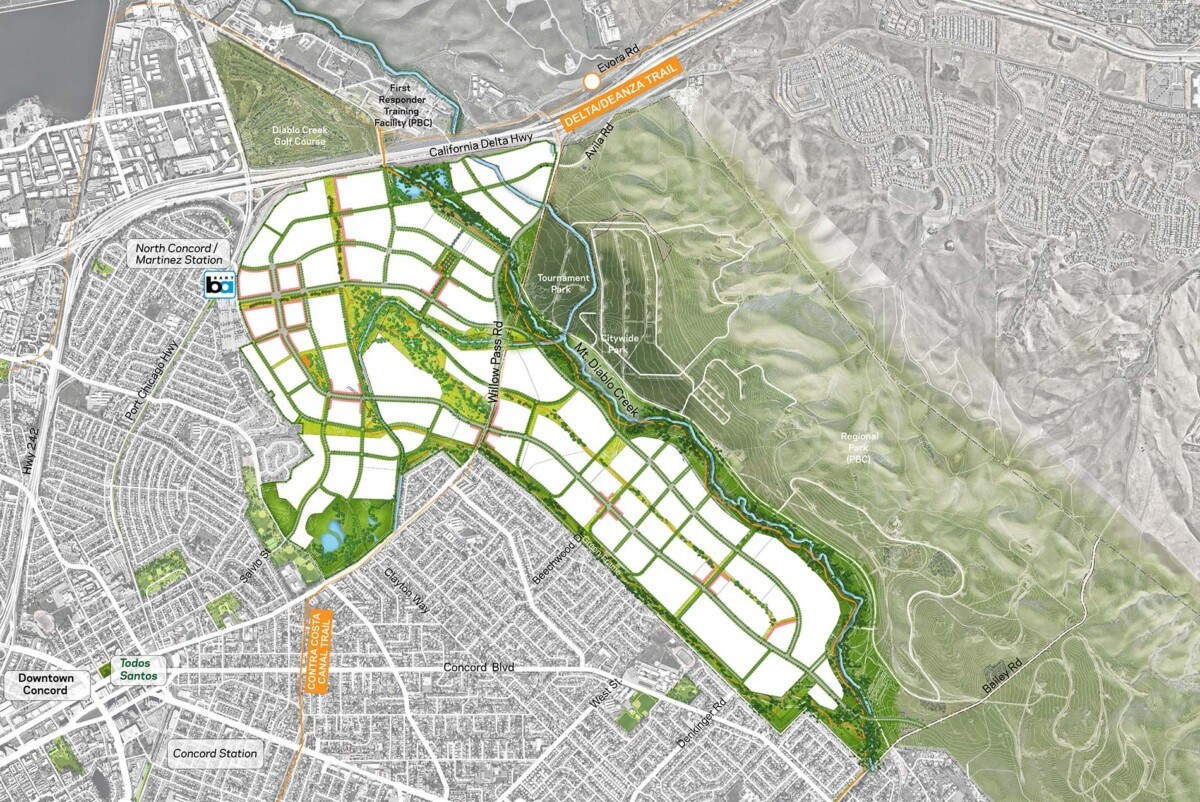
HOK’s relationship with the client was unique. The team often communicated through Seoul-based SAMOO Architects & Engineers, which acted as a translator and mediator. This process required developing self-explanatory graphics and renderings to effectively convey design concepts and options.



The team drew inspiration from the traditional Korean principle of ‘baesanimsu’ (배산임수), which emphasizes the harmonious placement of buildings within nature. This principle suggests that a mountain at the back provides protection and stability, while open views of water in front invite good energy and fortune.
This concept guided the placement of the buildings and the landscape’s organization, ensuring the design respected and celebrated the natural context.



The design process began with a deep dive into the campus’s existing infrastructure and surrounding ecosystems. The team paid special attention to the topography of Maemi Mountain. Studying the remaining ridges and valleys at the mountain’s base provided insights that guided the site organization.
The landscape design aligns with the triadic architectural form, with three defining pillars—Identity, Community and Health + Wellness—shaping the character of each associated landscape area.
Unifying these triadic landscape expressions is a ‘Forest Healing’ concept. This approach advocates for the restoration and regeneration of the natural evergreen-deciduous forest. This ecological approach encourages nature to permeate the campus boundaries, achieving a harmonious balance between the landscape and built environment.

The identity pillar shines in the welcoming gateway landscape. Water features greet employees and visitors at the Main and Sub R&D buildings.
A serene native forest valley welcomes people emerging from the site entry building. A gently sloped meadow reveals a stunning reflection pool that mirrors the Main R&D building. This pool serves as a spectacular focal point while regulating temperature by releasing cool air through evaporation during hot summers.




The community pillar finds its home in the amphitheater, a unique social space nestled between the arms of the trident-like building. This space reinterprets traditional theater elements. Three-tiered belvederes reach out from the mountain toward the building, offering prime views of the plaza and stage. Arced seat walls with planted terraces invite the forest trees to “climb down” the mountain, providing natural cooling and shade.
The amphitheater serves as a vibrant hub for dining, gatherings and events, creating a strong sense of community.


The health and wellness pillar shines in the North Recreation Park, a thoughtfully designed outdoor sports and recreation complex. Nestled at the base of Maemi Mountain, the park incorporates various sports programs, from soccer and basketball to badminton and tennis.
The park’s organic layout works with the site’s stepped terrain. Forest extensions provide natural visual and acoustic buffers between sports zones. A multi-use trail loop winds through the forested landscape.



The team found inspiration in the area’s dominant flora and fauna.
The pine cone, which opens and closes in response to the environment, influenced the building’s organic structure.
The magpie bird, with its color-shifting feathers, inspired the exploration of daylight and color inside.
The pine tree, a symbol of strength and resilience in Korean culture, also shaped the design. Its bent and organic form is echoed in the campus’s vernacular architecture.
By integrating biophilic elements and biomimicry principles, the design enhances the campus’s aesthetic appeal while contributing to the well-being and productivity of the people who work here.




The campus project is being implemented in phases.
The Sub R&D building is being constructed first and is scheduled to open in 2026. This allows the company to begin occupying its new campus while the Main R&D building is still under construction.
The Main R&D building, the campus’s flagship, is expected to open in 2028.


